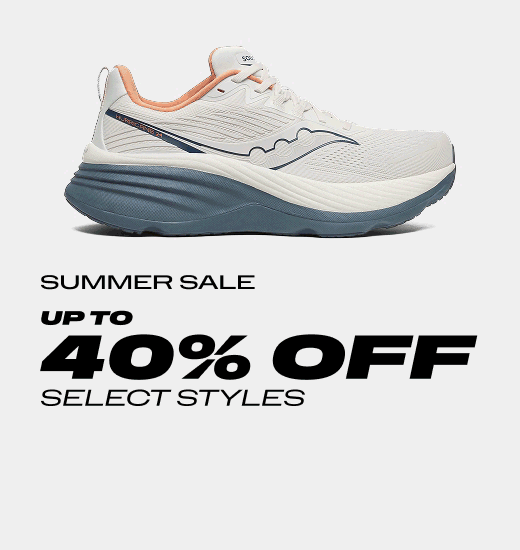Shoe Advisor
From the moment you lace up your shoes, to the way you feel when you hit your stride, Saucony is here to help you run for good. Let’s take a minute to find your perfect pair of running shoes.
What is your cushion comfort level?
Cushioning protects you by absorbing impact. How much you need depends on how you run.
- Want a soft landing with maximum protection? Choose Plush
- Want plenty of protection and a spring in your step? Choose Moderately Cushioned
- Want a comfortable landing with more feel for the road? Choose Firm and Responsive
What type of stability are you most comfortable with?
Some runners need shoes with additional stability to reduce stress caused by their ankles rolling in.
- Are you new to running or have been running in neutral shoes and have no particular aches or pains? Choose Neutral
- Do you notice slight discomfort during or after a run on the inside of your shin? Choose Light Stability
- While running, are you experiencing aches and pains on the inside of your shin and the side of your knee or hip? Choose Stability
- Do you have joint discomfort during or after your run? Are your old shoes are collapsed to the inside? Choose Motion Control
How does your foot strike the ground?
- Toes First: If you land toe first then you don't need added heel cushioning. Very few (5%) runners land Toe First.
- Flat: If you land with a flat foot then you may not need as much heel cushioning. Some (15%) runners land with a Flat Foot.
- Heel First: If you land heel first, then you probably need plenty of cushioning under your heel. Most (80%) runners land Heel First.
Our running shoes are built with two different levels of "offset" which is the difference in the thickness of the heel of the shoe vs the thickness of the forefoot of the shoe (the "ball" of your foot).
Shoes with 8mm offset have proportionally more cushioning in the heel compared to the forefoot than 4 mm. So 8mm may work better for runners who land with a heavier heel strike.
Shoes with 4mm offset work better for runners who land with a more midfoot strike, where the heel and forefoot land close to the same time.




